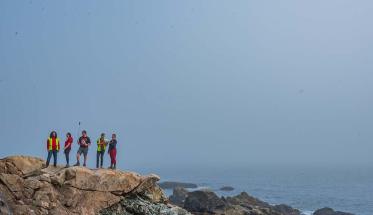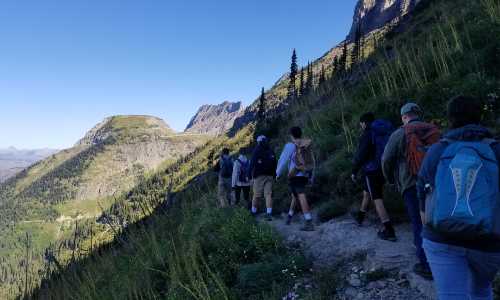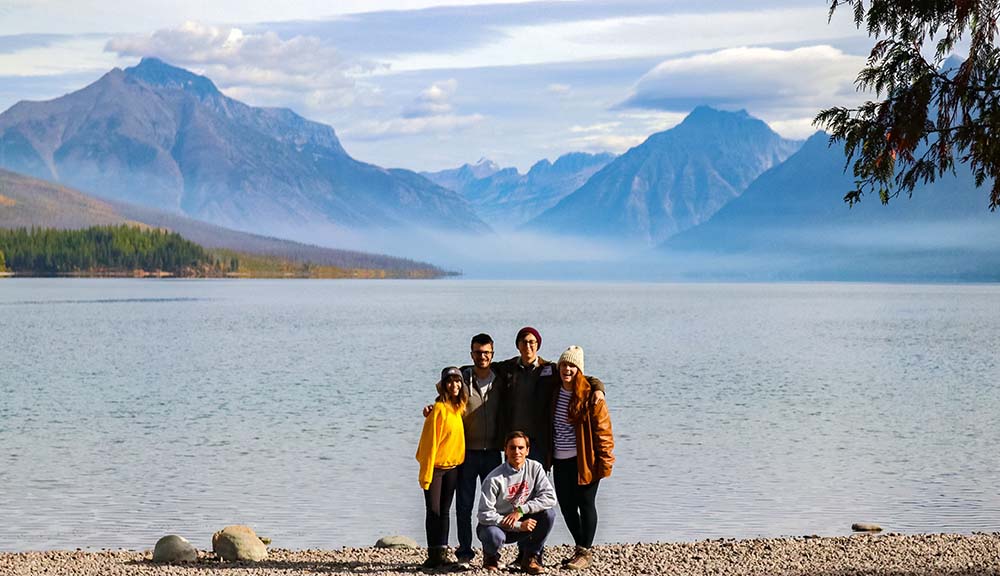For much of the calendar year, Acadia National Park is the first place in the continental United States to see the sun rise, so it’s only fitting that it was the first place WPI students returned to for in-person project work since the pandemic hit.
In a normal academic year, hundreds of WPI students travel to project centers around the world to complete their Interactive Qualifying Project (IQP). In response to health and safety guidelines and travel restrictions imposed by countries around the globe seeking to manage the pandemic, students were forced to pivot, completing project work remotely under the guidance of their advisors and project sponsors.
Then, in summer 2021, domestic conditions were deemed acceptable enough for 19 students and two faculty members to travel to the Bar Harbor Project Center for long-awaited in-person IQPs. Project center director and professor of music Frederick Bianchi and five of the 19 students—Bryce Bragdon, Navelyn Carrillo, Donovan Shaw, James Van Milligen, and Rebecca Whittier, all members of the Class of 2023—share their experiences working and teaching in Acadia National Park, the role of project-based learning in education, and what it was like being able to take a step toward a better normal.
“It was great to see the students arrive, to see them in person for the first time in this environment … all of us being there together was just perfect.” —Frederick Bianchi, project center director
WPI students are no strangers to taking on leadership roles, and members of the 2021 IQP teams were intent on taking their skills and passions to Acadia National Park while also blazing a different kind of trail.
“It was definitely nerve-racking at first,” says Carrillo of being part of the first project center to resume in-person operations since the pandemic hit. She and her team created content and panoramic photos of Acadia’s trails for the park’s website to help visitors plan their trip or cyber tourists to explore the park, building upon an IQP that began in 2012 with the goal of bringing the park's 125 miles of hiking trails into the digital age. “I wasn’t sure what to expect, but all precautions were taken to make sure everyone had a safe experience. I’m grateful for my time and experience in Bar Harbor.”
The teams remotely completed their pre-qualifying project (PQP) work—a full term of required project preparation for travel to a project center—meaning that not only were they the first group to resume in-person IQPs, but their trip to Acadia was like a reunion of sorts as students met, interacted, and eventually built friendships with peers they previously may have only known through a screen.
“It was awesome,” says Bragdon, a native Mainer who also worked on Carrillo’s team, and jumped at the chance to explore Acadia from a new point of view. “I was remote the whole last year, so it had literally been over a year since I had seen [anyone from WPI] in person.”
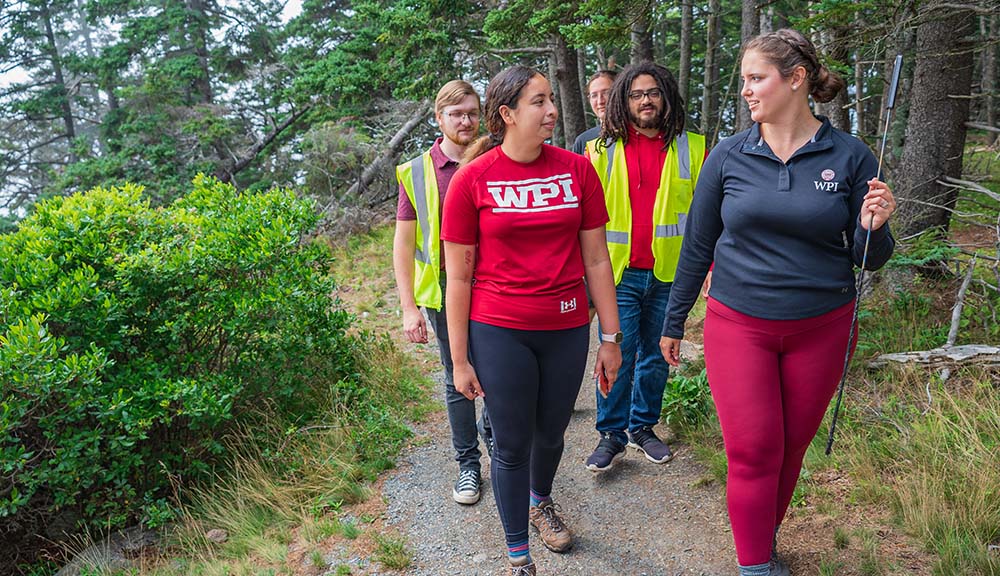
“At first, I was worried about working on the same project for seven weeks straight and that doing so could get boring, but I was never once bored and was constantly learning. It was a great experience.” —Bryce Bragdon ’23
Many of WPI’s 50+ project centers have students focusing on certain topics through their work. At Bar Harbor students can expect projects addressing preservation, improvement, appreciation, and sustainability of the natural environment, as well as issues affecting the visitor experience within Acadia National Park.
That last one is especially relevant now. The park—full of stunning views and picturesque, see ’em to believe ’em nature scenes, along with myriad outdoor activities—is busy in a normal year, but as families began to emerge from the pandemic searching for vacation spots that offered fun coupled with ample social distancing opportunities, it and other national parks were even more of a draw.
“The universal problem is that there are so many visitors,” Bianchi explains. “That translates to not only traffic problems but the visitor experience. It all trickles down; there’s resource depletion, pollution, noise … there are so many topics underneath that one umbrella, and endless opportunities for doing good work.”
This year’s opportunities for good work included the aforementioned trail view website, the development of an e-bike policy for the park, traffic monitoring and the implementation of a vehicle reservation system around Sand Beach, and a visitor mobility tracking system for the Park Loop Road region using big data analysis methods.
“We were working on different projects, with lots of interplay between the groups,” says Shaw, who worked on the visitor mobility tracking team. “Some of us were even able to cite the work of other teams in our own projects. It was a really nice sense of camaraderie.”
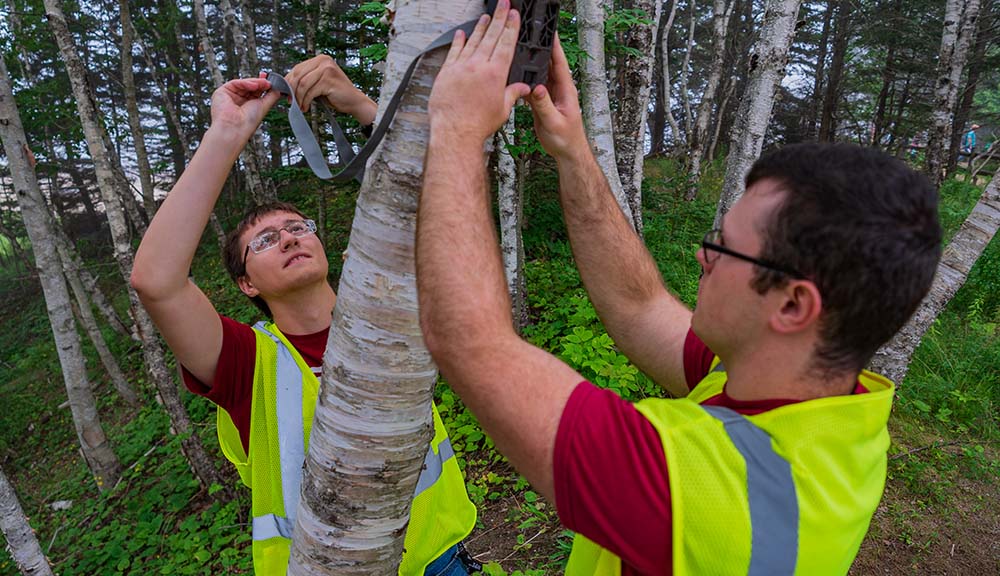
“This experience provided me the opportunity to broaden my horizons when it comes to the professional world. I was able to work with national park rangers and communicate clearly on where my team was going with the project to ensure it would be useful for the park.” —Navelyn Carrillo ’23
Like most things at WPI, the time the students spent at the Bar Harbor Project Center is twofold: it gives them a memorable college experience and prepares them for life after graduation in a way that’s nearly impossible to replicate.
While Bragdon believes his time working in Acadia provided much in terms of professional development, one aspect he focused on was learning how best to handle changing circumstances. “It taught us to be more adaptable,” he explains. “I learned that it’s okay if the goal or vision of the project shifts once we start working on it.”
It’s more than okay; that ability to pivot when a project changes course is an invaluable part of what Bianchi hopes students take from their time at the Bar Harbor Project Center, and a key learning outcome of project-based learning in general.
“We have an idea of what our plans are and what we’re going to do, but once we get on the ground and start working, things change, sometimes for the worse and sometimes for the better,” Bianchi says. “There’s a lot of improvising and problem-solving … to some students, that’s terrifying, but that’s where they have the chance to learn firsthand how to stay calm, approach the problem strategically, and figure out what to do.”
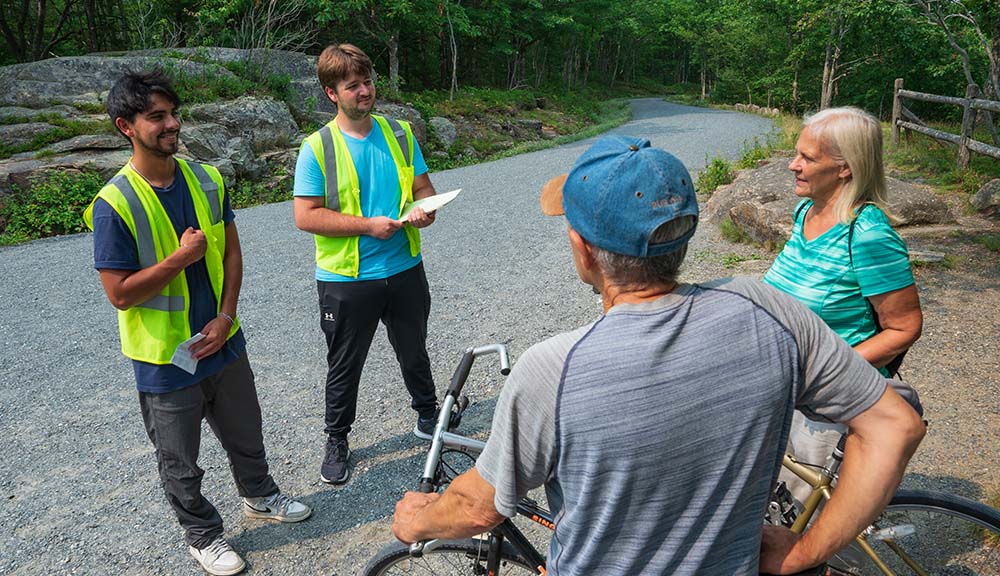
“Acadia National Park is full of natural beauty and has so much to be explored. Although I was on the trip to do a project, being in a new place let me explore the world around me.” —Rebecca Whittier ’23
One of the cornerstones of a WPI education? The fact that it’s well-rounded, with experiences in and out of the classroom, and the same can be said of what students get from their time at their respective project centers. Of course, projects are the main focus of their seven weeks, but there’s also time to explore and immerse themselves in wherever they are—in this case, one of the most picturesque locations in the country.
Whittier cites one of her favorite memories as not only a moment in nature, but one that really signified the camaraderie her team experienced as they worked on their project. While she and two teammates were panoramically photographing the Acadia Mountain trail on a particularly hot day, they passed their gear back and forth and helped each other climb up particularly steep sections of the trail. “After working together, we made it to the summit and sat taking in the beautiful views of the southern portion of the island ... it stands out to me because it demonstrated the relationship our team built throughout the project.”
Other bonding experiences took place inside the College of the Atlantic, where the students resided over the summer. Van Milligen explains that even though he and his teammates were tired after long days of field work, “we’d stay up and play board games, and were really able to bond during this time. Even if our free time was limited, it was memorable, and made IQP an even better experience.”
- By Allison Racicot
